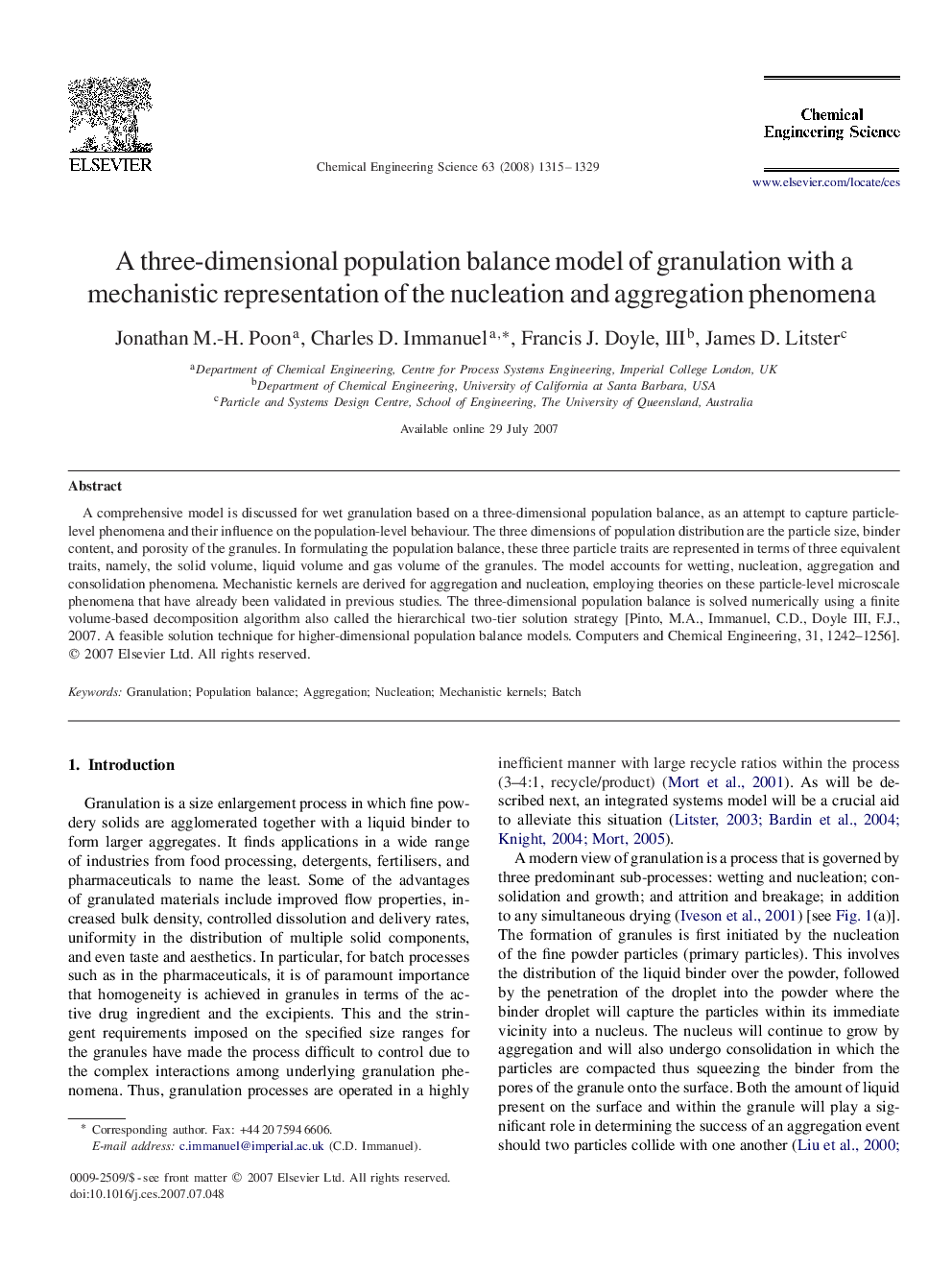| Article ID | Journal | Published Year | Pages | File Type |
|---|---|---|---|---|
| 159212 | Chemical Engineering Science | 2008 | 15 Pages |
A comprehensive model is discussed for wet granulation based on a three-dimensional population balance, as an attempt to capture particle-level phenomena and their influence on the population-level behaviour. The three dimensions of population distribution are the particle size, binder content, and porosity of the granules. In formulating the population balance, these three particle traits are represented in terms of three equivalent traits, namely, the solid volume, liquid volume and gas volume of the granules. The model accounts for wetting, nucleation, aggregation and consolidation phenomena. Mechanistic kernels are derived for aggregation and nucleation, employing theories on these particle-level microscale phenomena that have already been validated in previous studies. The three-dimensional population balance is solved numerically using a finite volume-based decomposition algorithm also called the hierarchical two-tier solution strategy [Pinto, M.A., Immanuel, C.D., Doyle III, F.J., 2007. A feasible solution technique for higher-dimensional population balance models. Computers and Chemical Engineering, 31, 1242–1256].
